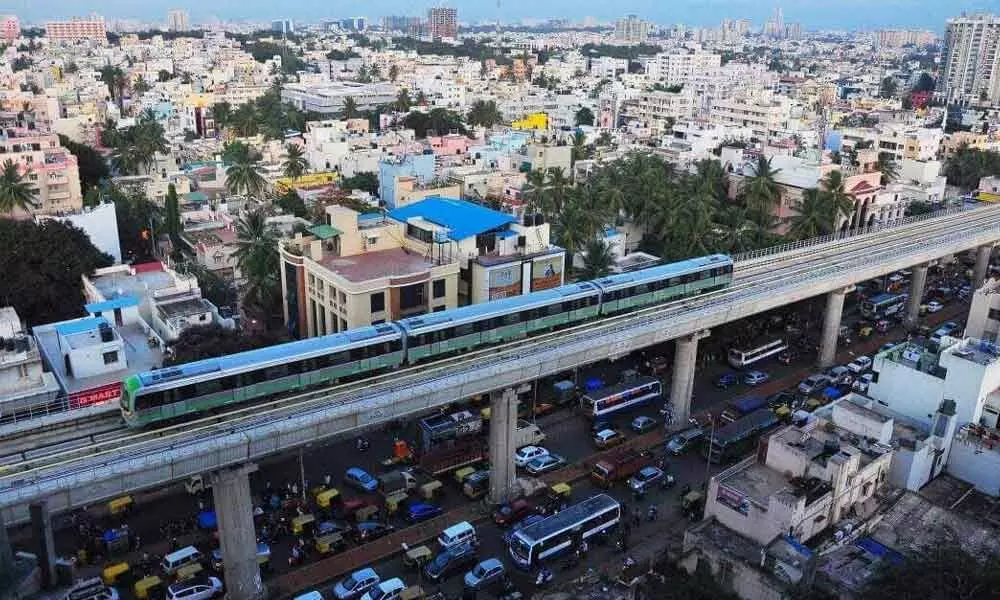Namma Bengaluru all set to implement revised TOD policy

Namma Bengaluru all set to implement revised TOD policy
Karnataka, especially Namma Bengaluru is all set to implement a revised TOD (Transit Oriented Development) policy soon, subject to government nod.
Bengaluru: Karnataka, especially Namma Bengaluru is all set to implement a revised TOD (Transit Oriented Development) policy soon, subject to government nod.
TOD or transit-oriented development as the name signifies, is urban development of residential, business and entertainment spaces oriented around and within walking distance of public transport like rail, road or air hubs. The Bangalore Metro Rail Corporation Limited (BMRCL) had framed a TOD policy in 2019 which could not be implemented due to various reasons. Now after incorporating changes, the new policy has been put forth and the BMRCL is waiting for the approval from the government.
"This can help in decentralisation and development of urban eco system in and around transportation nodes. Such neighbourhoods efficiently utilize land to accommodate affordable housing projects, open and green spaces, and urban design, thus offering better liveability. Additionally, transportation and mobility become easier, thus leading to improved work life balance of the working population. For businesses, the ease of doing business helps them in scaling. Such corridors also create plenty of job opportunities and make the community economically sustainable," avers Dr Prashanth Reddy, Chairman, Real Estate Expert Committee, BCIC
The benefits of TOD will be immense. Setting up neighbourhoods around areas of transit will promote better mobility through better public transport and connectivity, will serve to reduce car traffic, will also reduce household spending on transportation, will promote walk-to- work and cycle-to-work and therefore healthier lifestyles, lower pollution, higher foot-traffic for commercial businesses and decreased suburban sprawl.
"It will benefit the general public by providing better mobility solutions and will serve to decongest the city center. However, any policy on development like TOD should be acted upon with the need of the hour and action should be specially driven with lightning speed. It should be handled at the highest level to ensure speedy implementation," advises Suresh Hari, Chairman, CREDAI Bengaluru.
Both government and private stakeholders will be highly benefitted with this policy. Reduction in population density in central areas will make maintenance and developmental activities faster. Office spaces within these pockets will garner tenants and also make the commute easier for the workforce. All these will maximize utilization of public transport and other logistics infrastructure.
Implementing TOD in Bengaluru/ Karnataka however is a challenge because of various reasons. In the core city which is zone A, it is a huge challenge because of high densities and high property values. Also, the TOD policy pertaining to Bengaluru considers mass transit like Metro but not buses as a means of transport. But buses are a more popular means of commute in Bengaluru.
"The development in Bengaluru city has been extremely reactive. Large scale developments have emerged across the city and to develop the necessary infrastructure now will be a mighty challenge. In order to provide the right and accessible infrastructure, the government will have to acquire private property which will cost a substantial sum. This will be a big constraint in setting up such corridors in Bengaluru city," agrees C N Govindaraju, Chairman and Managing Director, Vaishnavi Group
Also, the draft TOD has considered only the BMA (Bangalore metropolitan area) which is around 1250 kms as against Bangalore metropolitan region (BMR) which is around 8000 kms comprising of Bengaluru Urban, Bengaluru Rural and Ramnagara - Chennapatna belt. Hence limiting TOD to the city would be a fragmented approach since commute is more regional in nature. Bengaluru actually needs a mobility plan rather than just TOD. The National Urban Transport Policy emphasises a mobility plan that integrates both land use and transport planning, through TOD.

